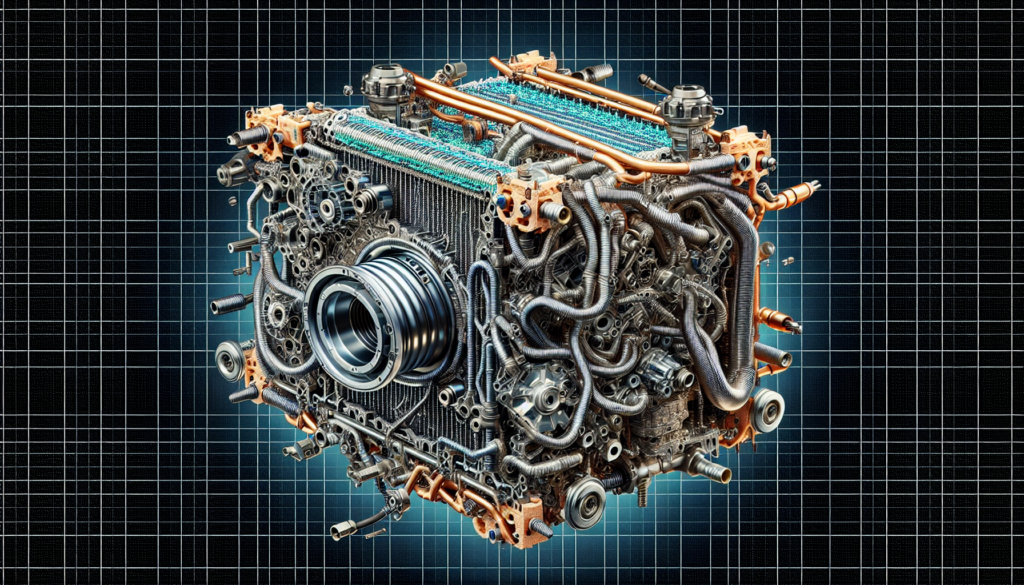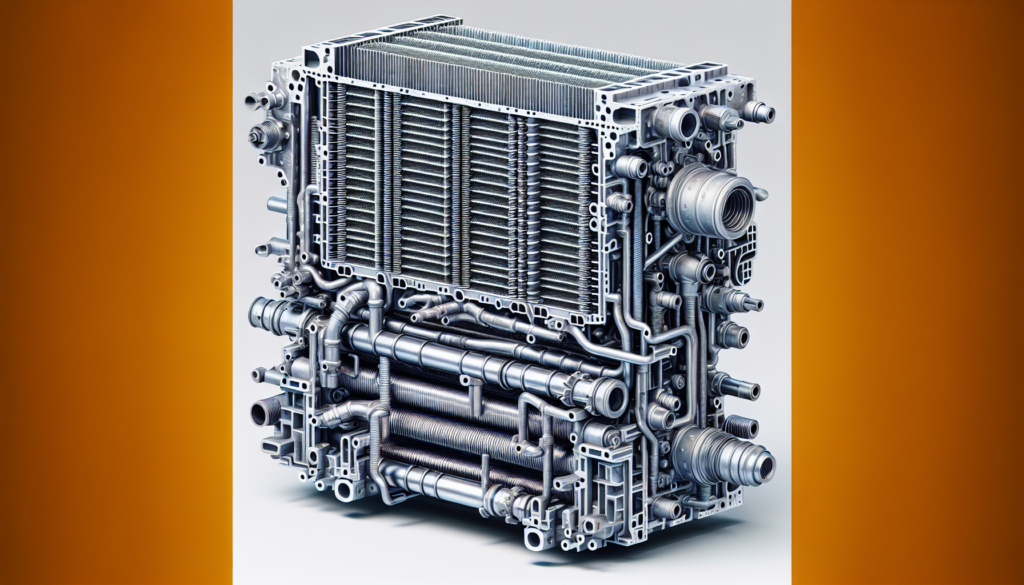
If you’ve been noticing that the heat in your Cascadia isn’t functioning as it should be, there may be an issue in its heater core blocking its performance. This article aims to explain how a hinderance in the heater core of your Cascadia could be the culprit that’s stopping your heater from working properly. Let’s walk together down the road of understanding your vehicle’s heating system and find ways to restore warmth back in your drives.

Understanding Cascadia Heating Systems
In your truck’s complex system, the heating system plays a crucial role in providing a comfortable and safe driving experience, especially in the harsh winter months. If you drive a Cascadia truck, understanding the workings of its heating system will help you recognize when there might be an issue.
Components of Cascadia’s heating system
The heating system in a Cascadia truck comprises various components. The major parts include the heater core, the blower motor, the heater control valve, the heater controls, and related hoses and sensors. All these play unique roles in ensuring that hot air flows into your truck’s cabin when you need it.
Role of the heater core in heating
Among these components, the heater core plays the central role. It acts like a small radiator working in conjunction with your engine’s cooling system. As the engine warms up, the coolant absorbs this heat and is then passed through the heater core, which then dispenses this warmth into the cabin of your truck.
Symptoms of heating system issues in trucks
Being aware of potential heating system issues can help you take timely action. Common signs of a malfunctioning heating system are a lack of heat emanating from the vents, a sweet or syrupy smell, the windshield fogging up, or even visible coolant leaks.
Basics of Heater Core Functionality
Knowing how the heater core works helps to understand when it might not be working as it should.
How a heater core operates
Operating almost like a miniature radiator, the heater core in your Cascadia truck uses engine coolant to create warmth. As your engine’s coolant heats up, it is channeled through tubes in the heater core before being returned to the engine.
Transfer of heat to the cabin
A fan blows air over these hot tubes, bringing heated air into the cabin when you request it. It’s simple yet effective, but like any part of your truck, it can encounter issues over time.
Common causes of heater core malfunctions
A heater core can malfunction due to various reasons. The common ones are coolant leaks, or a blockage preventing the coolant from passing through the core. Also, the heater core can fail due to normal wear and tear, especially in older vehicles.
Identifying a Blocked Heater Core
A blocked heater core is a particularly common issue and not always easy to diagnose.
Signs and symptoms of a blockage
Lack of warm air blowing from your vents is a common symptom of a blocked heater core. However, other signs include unusual smells, foggy windows, and visible coolant leaks.
Temperature inconsistencies
Temperature inconsistencies are another sign—a cooling system that is too hot or too cold or fluctuates frequently could indicate a blockage.
Visible inspection and diagnosis
A visual inspection under the dashboard for coolant leakage or physical damage can also help diagnose a heater core blockage, though professional help may be required for a definitive diagnosis.
The Implications of a Blocked Heater Core
The problems caused by a blocked core aren’t just about comfort. They can also have serious implications for your truck’s functionality and even its engine’s health.
Reduced cabin heat and comfort
A blocked heater core would fail to provide sufficient heat, making the cabin incredibly uncomfortable, especially during cold months.
Potential engine overheating
The heater core is an integral part of the cooling system, and a blockage may result in the engine overheating, triggering much more serious concerns.
Strain on the heating system components
The blocked core puts strain on other parts of the heating and cooling system, potentially leading to further complications and more expensive repairs over time.

Assessing Heater Functionality Issues
When suspecting heating functionality issues, several things need to be checked.
Inspecting heater controls and regulators
The first inspection point would be the heater controls and regulators. These can malfunction, preventing the correct commands from reaching the heater core.
Evaluating airflow and distribution
Check the airflow and distribution. The blower motor, which is vital for circulating hot air inside the cabin, could be faulty.
Checking the thermostat and coolant levels
Finally, the thermostat and coolant levels should be inspected. A misbehaving thermostat or inadequate coolant can severely affect the heating performance.
Diagnostics: Pinpointing the Blockage
When a heater core blockage is suspected, certain professional diagnostic tools and techniques can help pinpoint the exact problem location.
Professional diagnostic tools and techniques
These tools, which could include infrared thermometers to identify hotspots, require specialized knowledge. Hence, it’s advisable to take your truck to a professional mechanic if you suspect a heater core blockage.
Using a thermal imaging camera
A thermal imaging camera can detect temperature differences across the heater core. If there’s a blockage, one section of the core might be significantly warmer or colder than the surrounding areas.
Pressure testing the heater core
Pressure testing can also be informative. If the heater core can’t maintain the pressure, it often points to a blockage or a leak.

Methods to Resolve a Heater Core Blockage
Once a blockage is diagnosed, there are several options to resolve the issue.
Flushing the heater core
A simple solution could be flushing the heater core. This involves forcing a solution through the core to clear the blockage. This is the preferred and quickest method to address the blockage.
Chemical cleaners and their effectiveness
A chemical cleaner can also be used to dissolve the blockage. While it can be effective, it’s essential to ensure that it’s safe to use with your truck’s specific type of coolant.
When to consider heater core replacement
If these methods are not successful, or if the core is too damaged, a replacement might be necessary. This could be expensive, but sometimes can be the only viable solution.
Preventative Measures for Heater Core Maintenance
Prevention is always better than cure. You can take a few precautionary steps to ensure that your heater core remains functional for a longer period.
Routine coolant system flushes
Regularly flushing the coolant system removes any accumulated debris, thereby reducing the risk of blockages. It also ensures the coolant quality remains high.
Importance of using the correct coolant
Using the correct type of coolant is also crucial. The wrong coolant could lead to unexpected reactions in the system, further causing blockages.
Regular system inspections and maintenance schedules
You should also adhere to regular system inspections and maintenance schedules. These will help identify any issues in the early stages and fix them before they escalate.

Common Pitfalls in Troubleshooting Heater Issues
While troubleshooting heater issues, it’s important to avoid some common mistakes.
Misdiagnosing the heater core blockage
People often misdiagnose a blocked heater core for other heating system issues, thus making the problem worse. Always be thorough in your inspections.
Overlooking other potential causes
Focusing solely on the heater core might result in other potential causes being overlooked. Several elements influence the heating system’s functionality and should all be considered when troubleshooting.
Inadequate repair techniques leading to recurring issues
Using unprofessional or inadequate repair techniques could also lead to recurring issues. To avoid this, it is recommended to visit a professional mechanic who is familiar with heater core issues on Cascadia trucks.
Frequently Asked Questions About Cascadia Heater Core Issues
Because heater core issues can have serious implications, many people have specific questions about these issues. Here are a few common ones:
Can a blockage resolve itself over time?
Unfortunately, a blockage in your Cascadia’s heater core will not resolve itself over time. In fact, if a blockage is left untreated, it could lead to more serious consequences including engine overheating.
Are there any quick fixes for a blocked heater core?
While certain quick fixes like flushing the system can work, they are usually temporary solutions. The best course of action is to consult a professional for a comprehensive approach to rectifying the issue.
How often should a Cascadia heater core be serviced?
For optimum efficiency and to prevent any blockages from forming, we recommend servicing your Cascadia’s heater core at least once a year. However, inspections should take place more often if any issues are noticeable.
In summary, the importance of a fully functional heater core in your Cascadia cannot be understated. It’s crucial to keep an eye out for any signs of blockage and potential issues, follow a regular maintenance schedule and consult a professional mechanic when in doubt.
